Carolina on the Wing
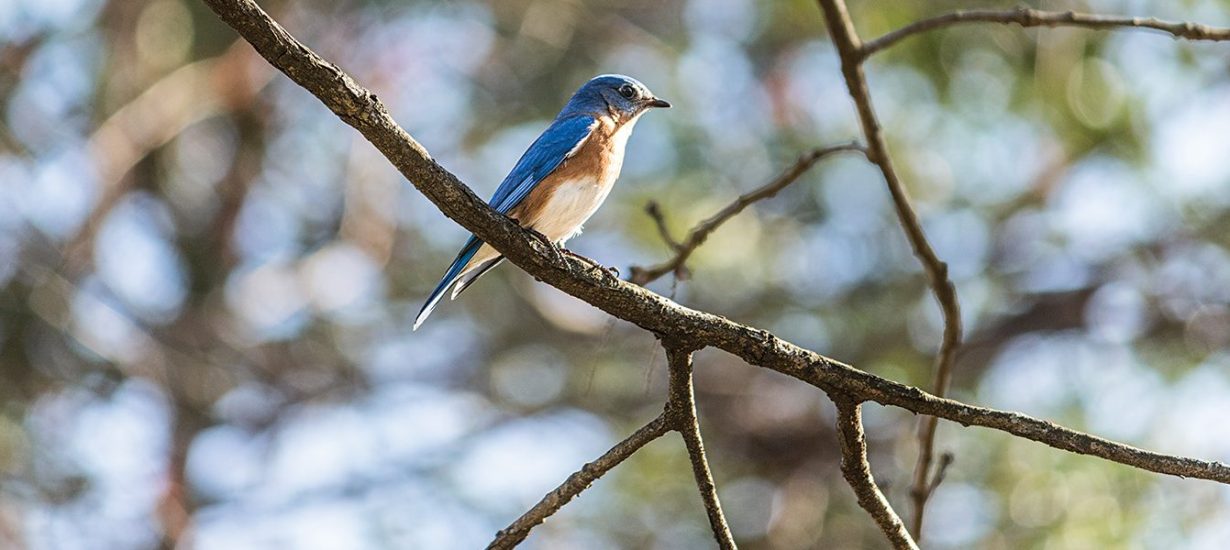
Photos and story by Jason D. Smith ’94
I didn’t really set out to shoot any birds.
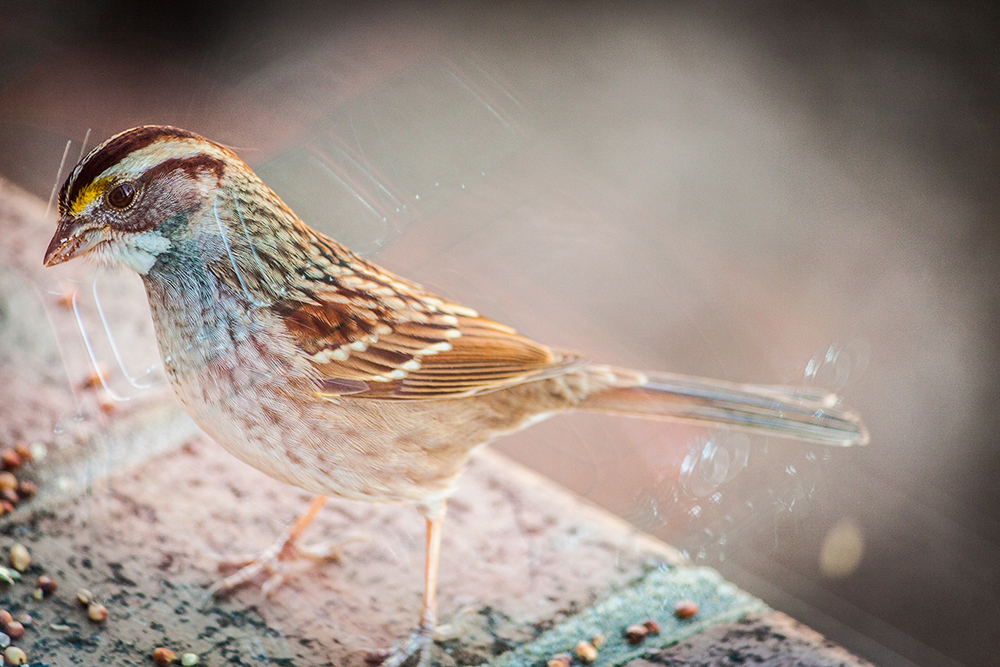
A white-throated sparrow. This less-than-great shot is the first office-window bird photo the author took. (The unintended reflections around the bird’s head and tail were caused by a model car sitting inside the room near the window.) Photo by Jason D. Smith ’94
In July 2013, on my first day of work at the GAA, a co-worker left a bag of sunflower seeds in my office. He suggested I leave some on my window sill.
Not long after that, I looked up from my desk to see a little brown bird — I’d soon come to know it as a white-throated sparrow — perched not three feet away and chowing down on seeds. My camera was close at hand. Would it spook and take off?
It didn’t. Later, when I looked at the picture, I realized that I’d never seen a wild bird in quite that way. (See photo at right.) Here was something fragile and forceful, an ancient life-form with tiny whorls of fringed feathers, grotesque feet, a dirty beak and atrocious table manners. I decided to keep a camera at hand all the time.
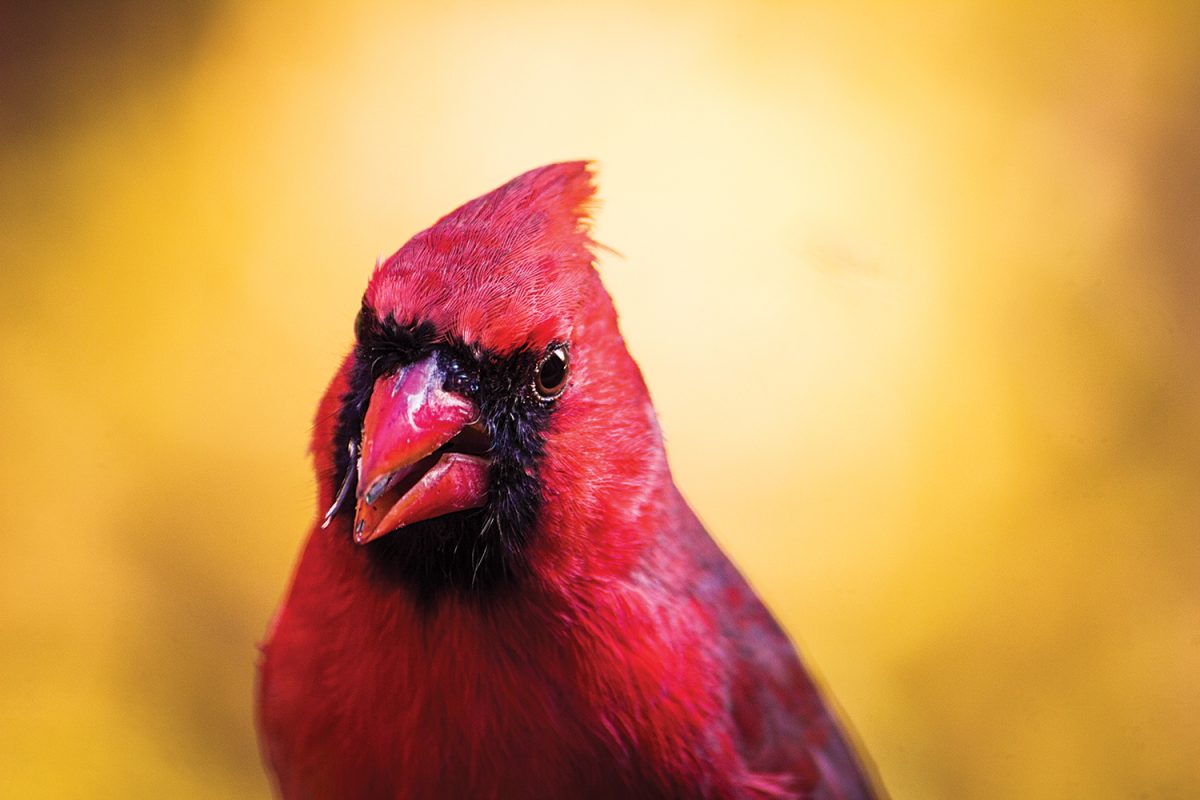
A male northern cardinal and a backdrop of November leaves outside the George Watts Hill Alumni Center.
■ Eats: seeds (which it quickly and expertly shells), insects
■ Chapel Hill resident: year-round
Photo by Jason D. Smith ’94
Since then I’ve kept a list of the different species that have landed at my window: 27 so far, including everything from the American goldfinch to the yellow-rumped warbler. (See list below.) Brown thrashers. Cedar waxwings. Sapsuckers. I’d never have guessed that George Watts Hill’s little patch of piney woods would have room for so many. I’ve watched them try to stay warm in the winter, try to grow back feathers after molting in the summer, try not to become exasperated with old-enough-to-know-better offspring that follow them to my window demanding to be fed.
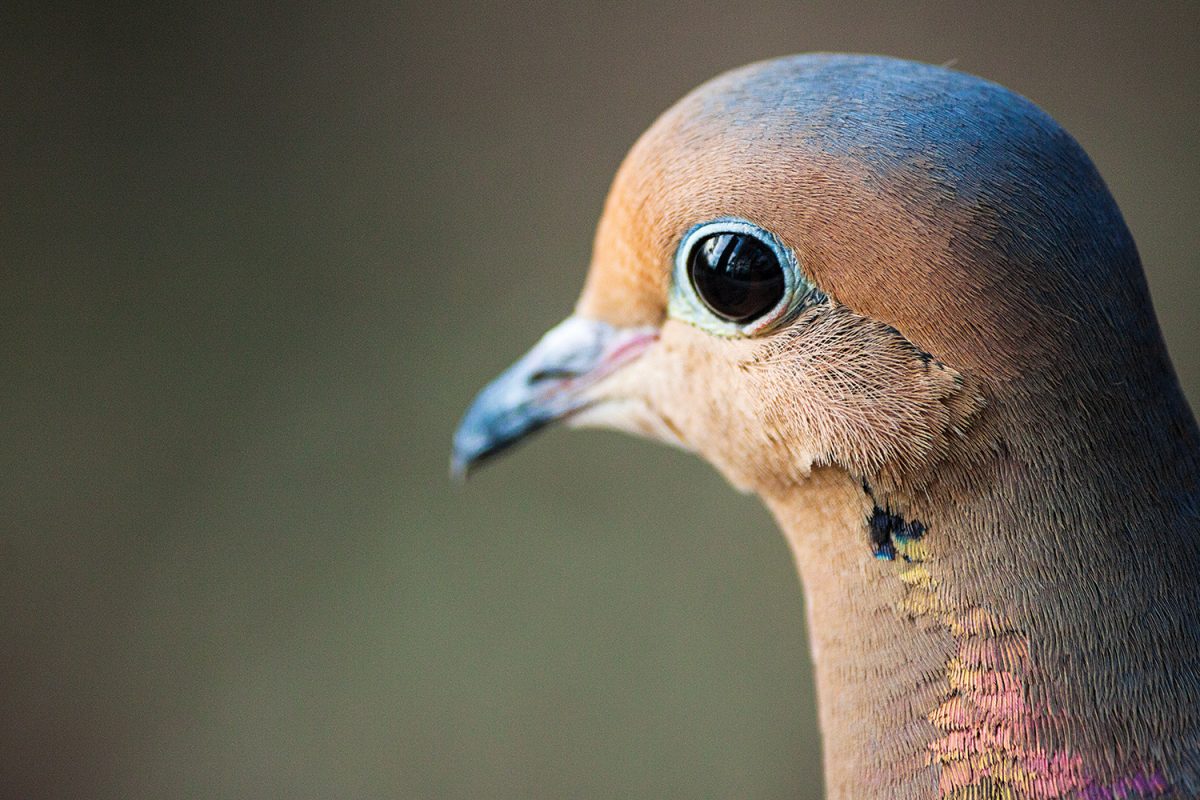
A mourning dove at the author’s office window. Mourning doves tend to feed ravenously, swallowing whole dozens of seeds to fill their crop before leaving in search of a quiet spot to digest them.
■ Eats: seeds (practically inhales them), fruit, insects
■ Chapel Hill resident: year-round
Photo by Jason D. Smith ’94
Now, whenever I’m out and about on the UNC campus, I’m much more aware of the many birds that call these 729 acres home. Naturally, the Arboretum is dappled with them, as are the quads. But they also roost in nearly every green and brown and brick patch of this place, lighting it up with their sweeps and swoops and songs. House sparrows live in Lenoir’s ventilation ducts. Chickadees in South Building’s bricks. Whether you’re in McCorkle Place or the parking lot of the Dean Smith Center, you’re never very far from a bird.
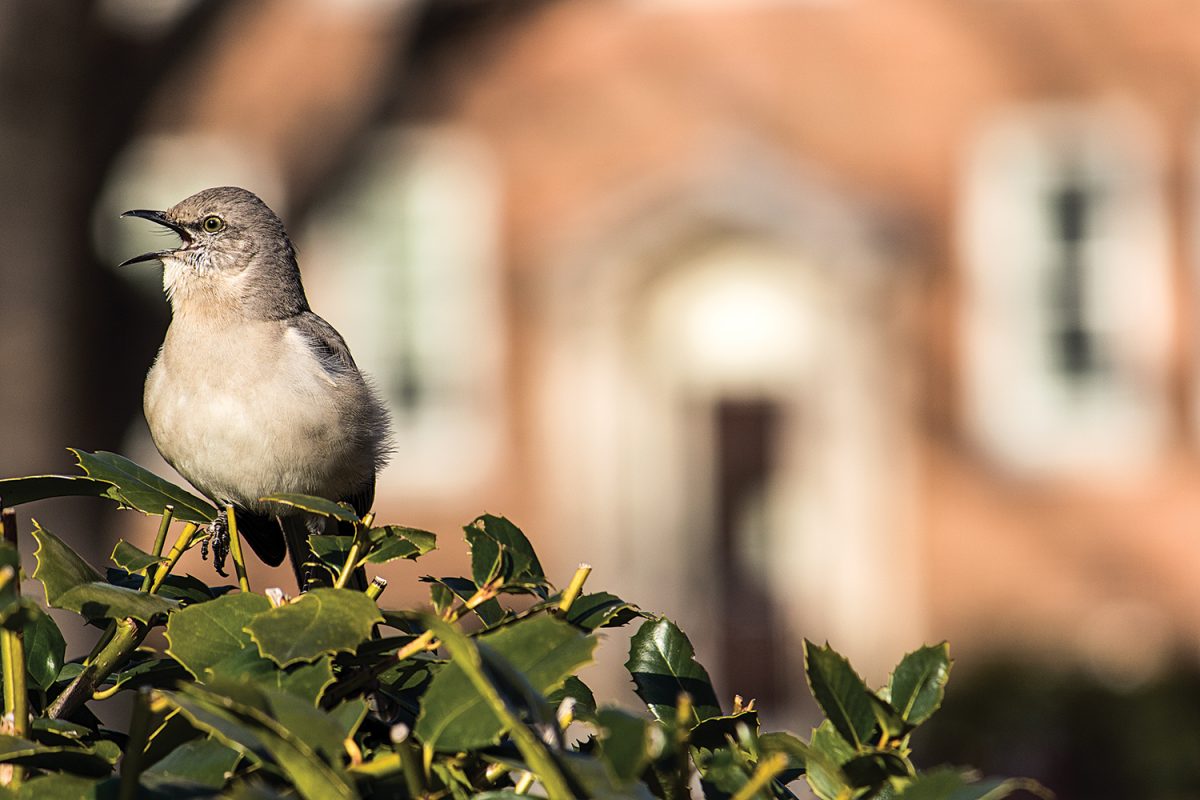
A northern mockingbird runs through some late-afternoon voice exercises near Steele Building on Polk Place. The bird’s scientific name roughly translates to “mimic that speaks many languages.”
■ Eats: insects, fruit
■ Chapel Hill resident: year-round
Photo by Jason D. Smith ’94
Birds of the GAA
Ranked by how often they visit the author’s window at the George Watts Hill Alumni Center
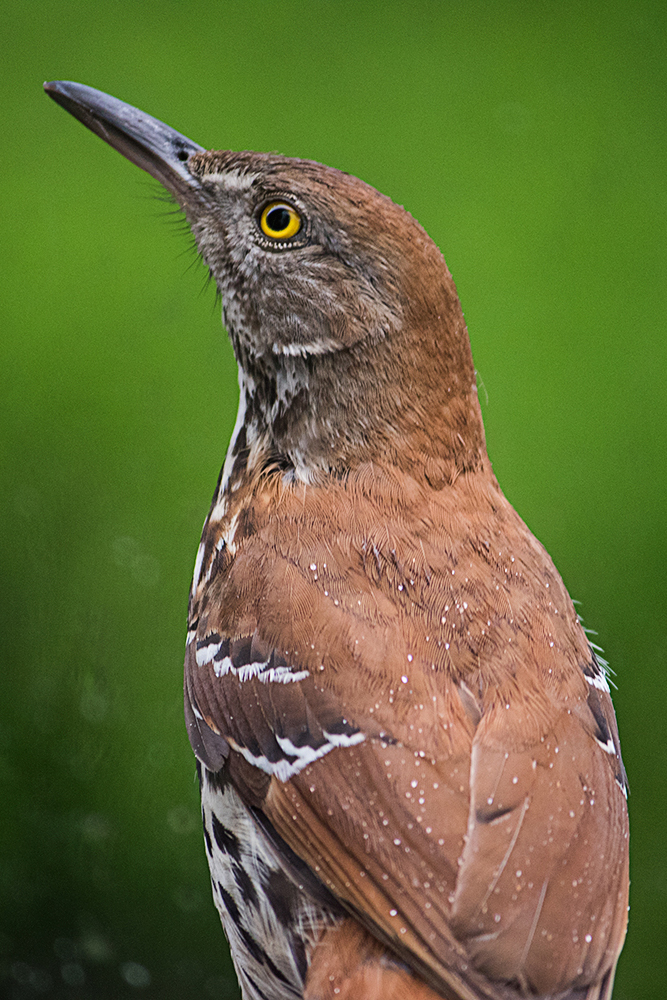
A brown thrasher in the rain at the author’s office window. These birds are prolific singers, with a repertoire of more than 1,100 song types. They’re also aggressive defenders of their nests, and have been known to peck both human and canine intruders hard enough to draw blood.
■ Eats: insects, arthropods, fruits, seeds, nuts
■ Chapel Hill resident: year-round
Photo by Jason D. Smith ’94
Frequent visitors
1. House finch
2. White-breasted nuthatch
3. Brown-headed nuthatch
4. Northern cardinal
5. Red-bellied woodpecker
6. Carolina chickadee
7. Tufted titmouse
8. White-throated sparrow
9. Mourning dove
10. Dark-eyed junco
11. Downy woodpecker
Occasional visitors
12. Pine warbler
13. Eastern towhee
14. American goldfinch
15. Common grackle
16. Brown-headed cowbird
17. Chipping sparrow
18. Yellow-rumped warbler
Infrequent visitors
19. Gray catbird
20. Brown thrasher
21. Carolina wren
22. Eastern bluebird
23. Yellow-bellied sapsucker
24. House sparrow
25. Pine siskin
26. Cedar waxwing
27. European starling
28. Eastern gray squirrel
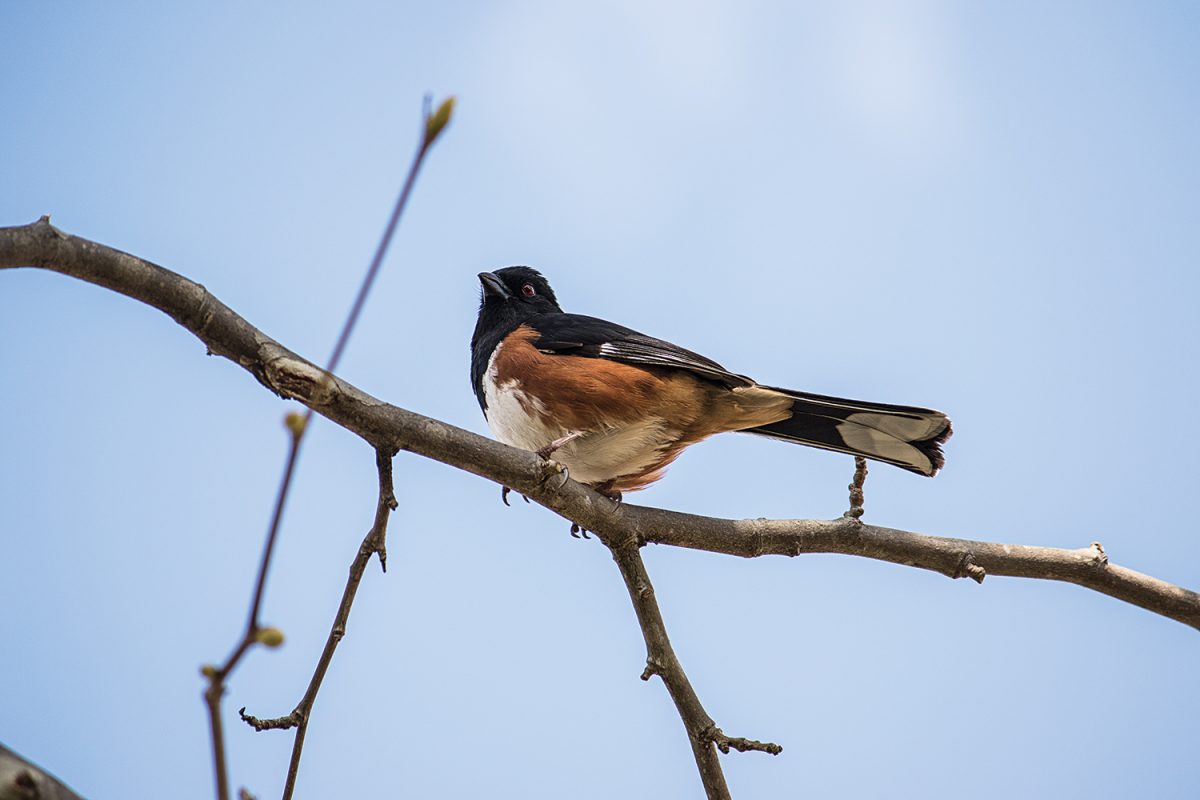
A male eastern towhee near Raleigh Street behind Davis Library. Towhees like areas with dense shrubs and bushes. They forage on the ground for insects, kicking up dead leaves with an odd little backward two-footed hop. The male’s short and chipper “drink your tea” song is instantly memorable.
■ Eats: seeds, fruit, insects
■ Chapel Hill resident: year-round
Photo by Jason D. Smith ’94
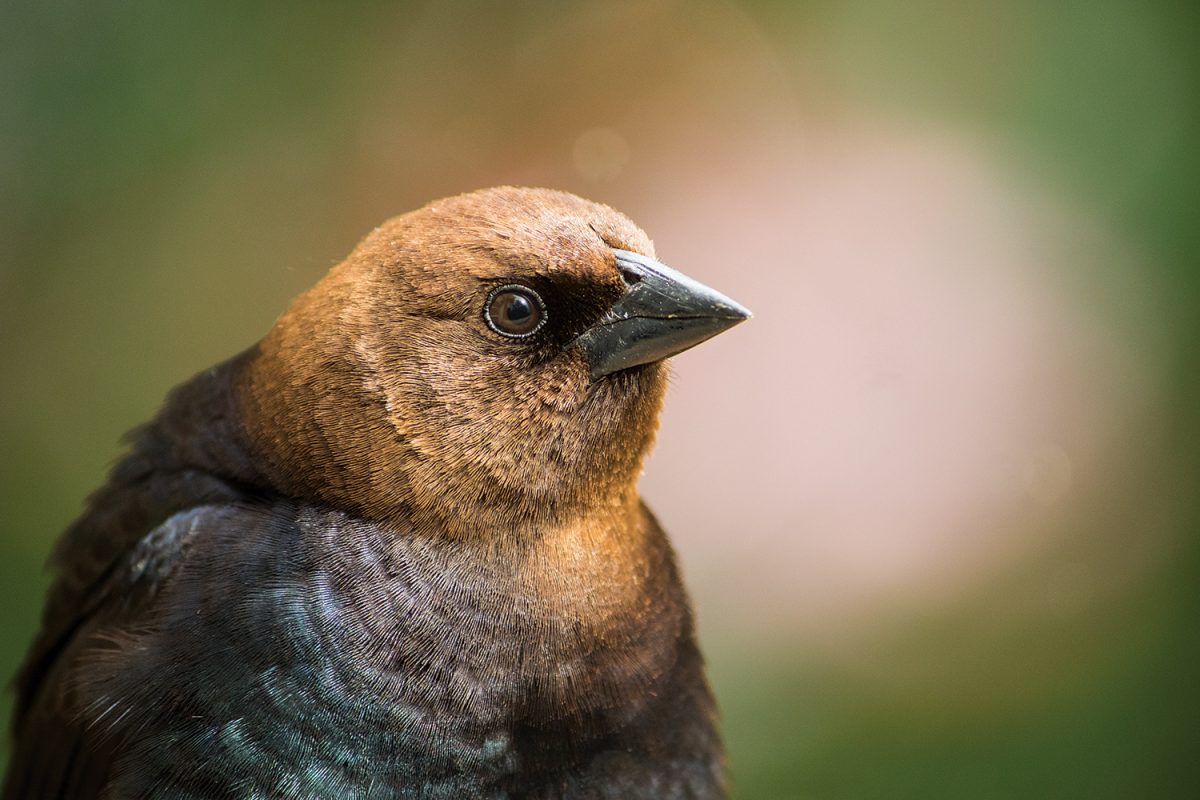
A male brown-headed cowbird. Female cowbirds lay their eggs in other birds’ nests. Most bird species will raise the cowbird as if it were their own. (Here on campus, the surrogate parents mainly seem to be house finches.) Some birds will puncture the cowbird’s egg or push it out of the nest.
■ Eats: seeds, insects
■ Chapel Hill resident: year-round
Photo by Jason D. Smith ’94
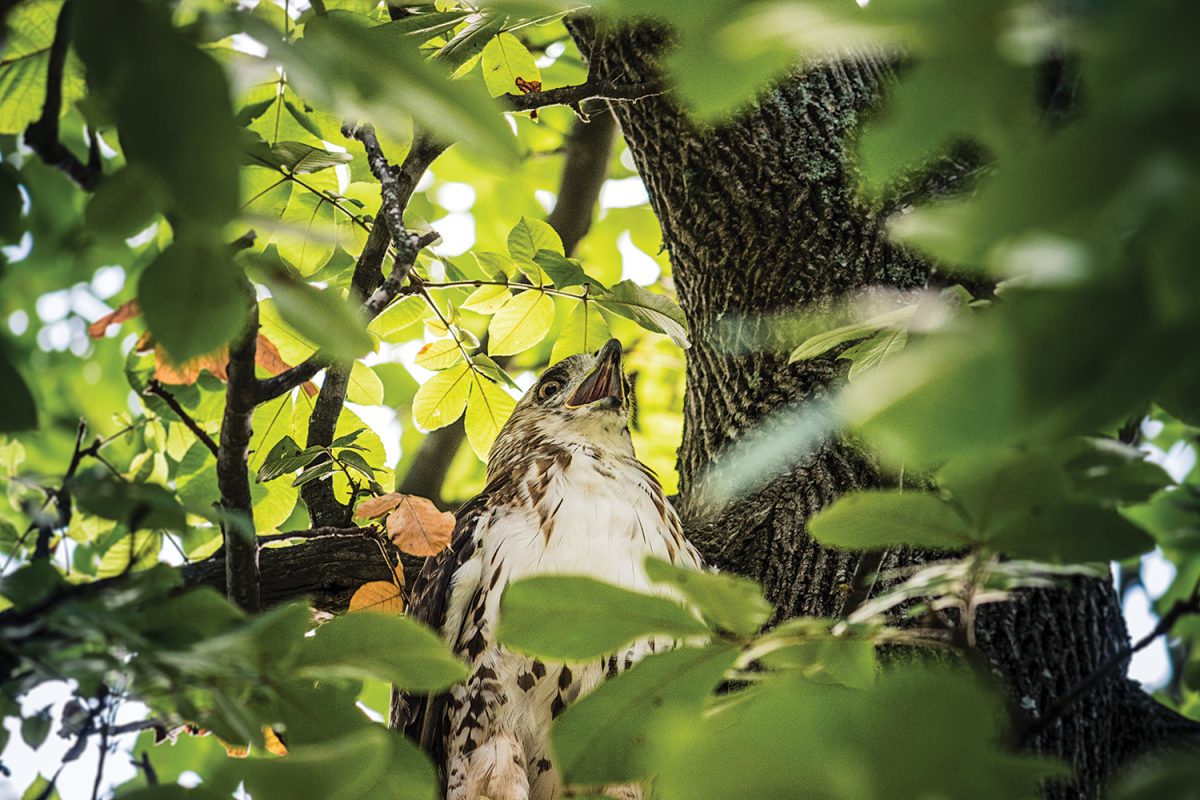
A red-tailed hawk in a tree outside the George Watts Hill Alumni Center in July. This bird’s plans for a bushy-tailed breakfast didn’t work out, and it flew away empty-taloned.
■ Eats: rodentia, some birds, snakes
■ Chapel Hill resident: year-round
Photo by Jason D. Smith ’94
A gallery of birds













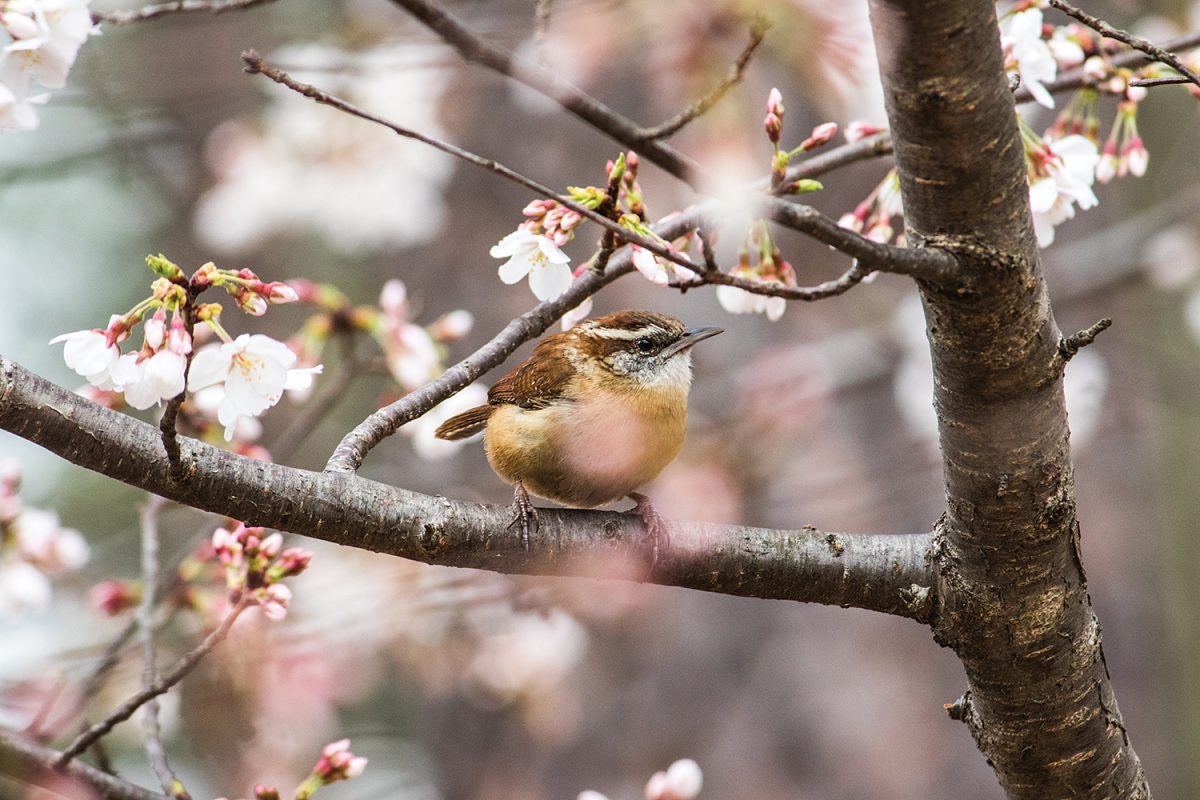
A Carolina wren in a cherry tree outside the George Watts Hill Alumni Center. Don’t let the diminutive size
fool you: This bird can really belt out a song. Next time you’re out and about, listen for its trademark “teakettle, teakettle” riff.
■ Eats: insects, spiders
■ Chapel Hill resident: year-round
Photo by Jason D. Smith ’94
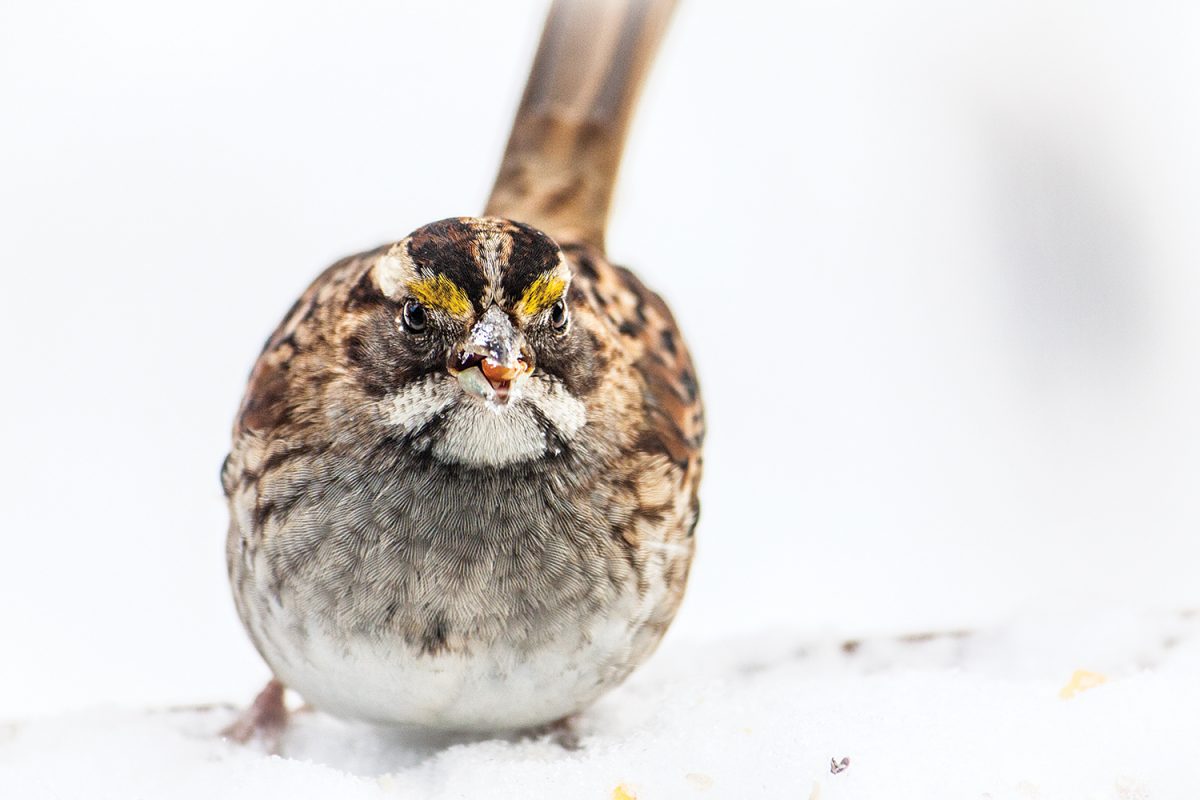
Carolina’s birds likely don’t appreciate the rare campus snow day as much as students do. This hungry white-throated sparrow has puffed itself up against the January cold.
■ Eats: seeds, fruit, insects
■ Chapel Hill resident: winter
Photo by Jason D. Smith ’94
Wingspan, Weight and Food Preference
of the birds pictured in this article (ordered by wingspan).
Primary food source:
■ insects ■ seeds ■ omnivorous
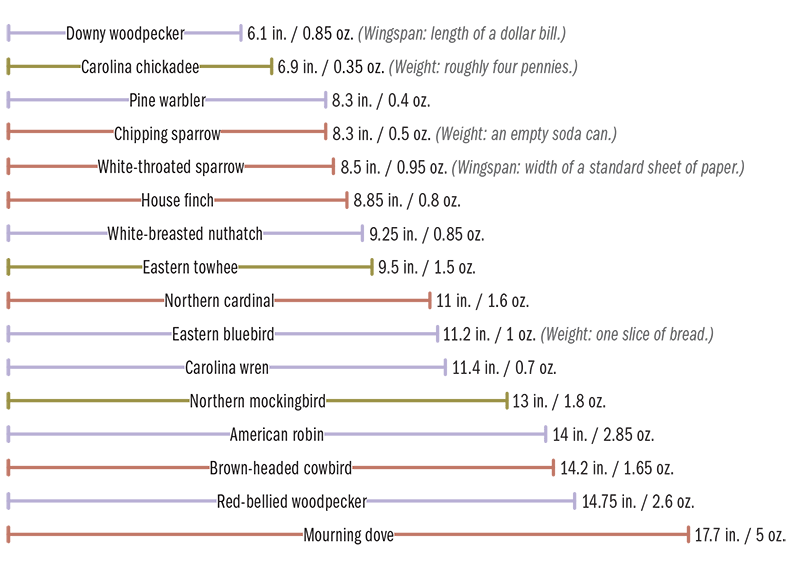
Not depicted, due to difference in wingspan scale: Red-tailed hawk (wingspan: 48.6 in. weight: 2.5 lbs.) Data: allaboutbirds.org (Chart by Jason D. Smith ’94)
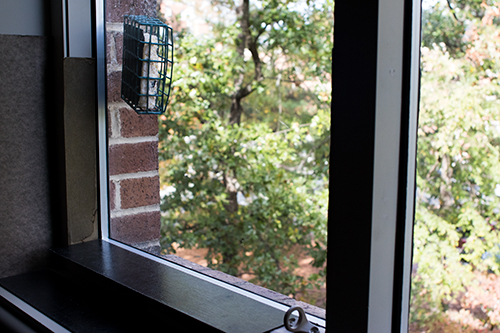
The author’s office window. Every morning I spread black oil sunflower seed on the brick ledge outside; a suet feeder hangs on the glass via a suction cup. To cut down on reflections and glare I use a couple of leftover pieces of black plastic landscaping edging inside the window along with some pieces of construction paper.
How to Shoot Birds at Home
- Start with a good camera. You’ll have more control and get much better results with a single-lens-reflex camera. (Most phone cameras and point-and-shoot cameras generally can’t take shots like these.)
- Get a lens that gets you close. You’ll need something with a decent amount of zoom. I took all these photos with a 250mm zoom lens.
- Check your camera settings. Use a fast shutter speed, a relatively high ISO (I usually go with 800), and the automatic focus function of your lens. Birds move very quickly.
- Get your window prepped, and keep it clean. Yes, you can shoot through the glass. Remove anything inside your window that might create reflections or glare on the glass. (Your brain may not notice these reflections when you’re looking at or through or window, but you’ll definitely notice them in a photo.) Clean the glass inside and out, especially after rain.
- Feed the birds. I use black oil sunflower seed, and often have a suet cake out for birds such as woodpeckers. I don’t bother with seed mixes — often sold under names such as “wild bird blend” — because they tend to contain a lot of filler seeds that many birds don’t eat.
- Practice, practice, practice. For every good shot I get, there are many, many throwaways.
Related: “For the Birds,” our story about NC Audubon Society founder T. Gilbert Pearson (class of 1899), November/December 2002.
Thanks for reading the Carolina Alumni Review
Carolina Alumni members, sign in to continue reading.
Not yet a member? Become one today.

